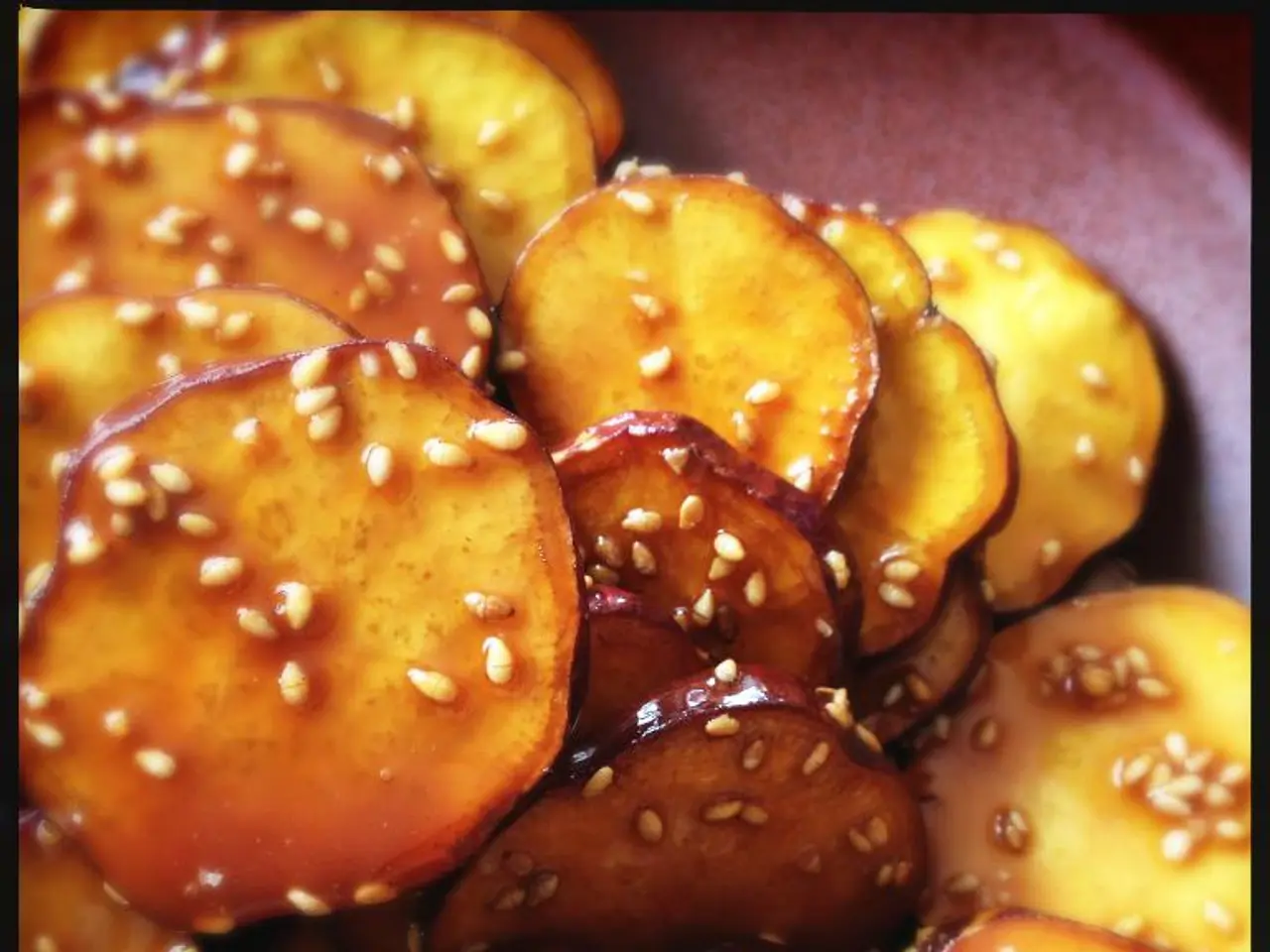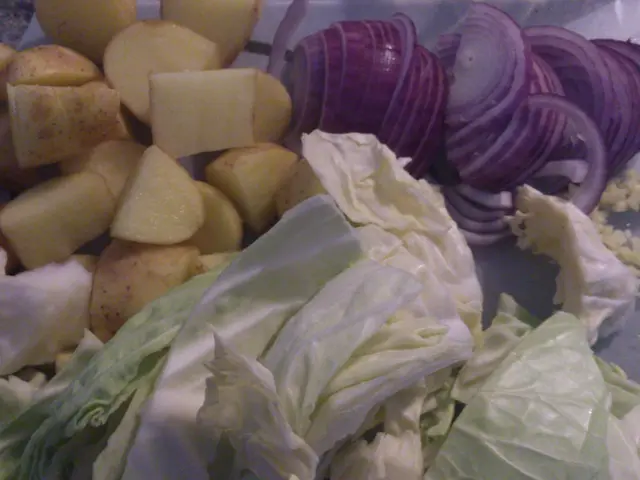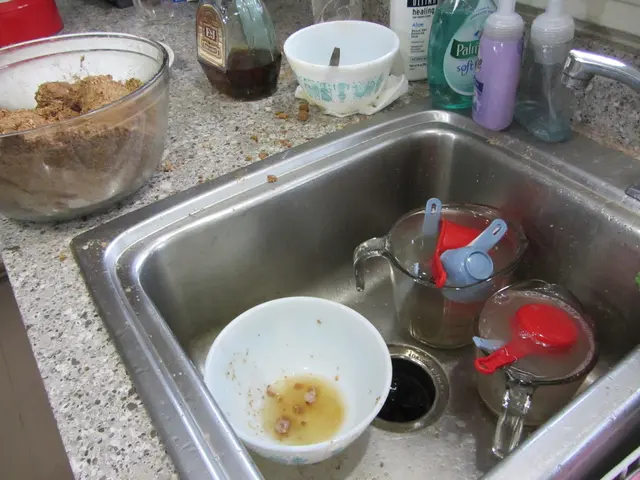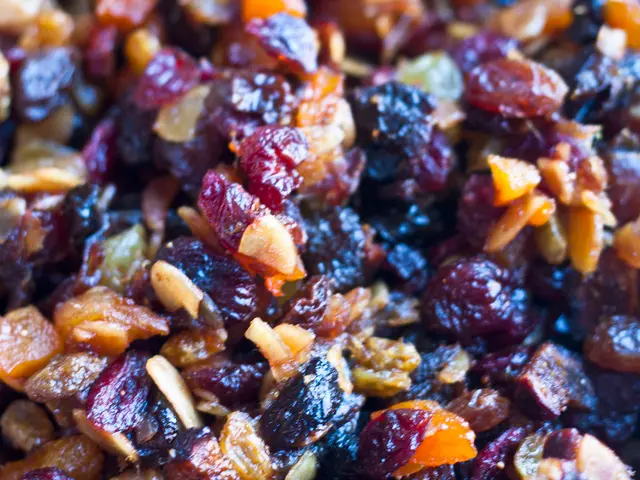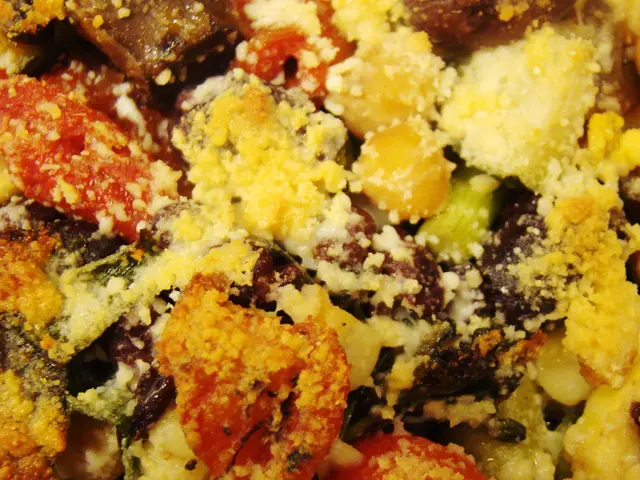Speedy Recipe Ideas and Meal Plans for Diabetics: Delicious and Healthy Meal Inspiration
Managing diabetes requires a balanced and healthy diet. Here's a breakdown of what that means:
A diabetic diet involves making smart food choices to control symptoms, prevent complications, and improve overall quality of life. Eating the right foods helps regulate blood sugar levels, which is crucial for people with diabetes.
Healthy eating involves consuming foods that are packed with nutrients, low in unhealthy fats and calories, and manage carbohydrates. Proper meal planning and portion control are also essential.
The consequences of not managing diabetes effectively can be severe, increasing the risk of heart disease, stroke, vision loss, kidney failure, and amputation.
Diabetes Superfoods
When it comes to food, most items can fit into a diabetic diet, although some need to be eaten sparingly or in moderation. Some foods are considered "diabetes superfoods" because they're rich in vital vitamins, minerals, fiber, and have a minimal impact on blood sugar levels.
Regularly Enjoy
The American Diabetes Association lists their top 10 superfoods as beans, berries, citrus fruit, dark green, leafy vegetables, fat-free dairy, fish, nuts and seeds, sweet potatoes, tomatoes, whole grains, avocados, eggs, fruits, lean meat and poultry, olives and olive oil, tofu and tempeh, and vegetables.
Eat Sparingly or Avoid
To minimize the risk of heart disease, it's best to limit foods high in sodium and fats. Examples include fatty and processed meats, high-fat dairy products, processed snacks and foods, deep-fried foods, baked goods, high-sodium and salty foods, and refined grains.
Balancing carbohydrate intake is also crucial, as carbohydrates can cause blood sugar levels to rise if consumed in large quantities.
What to Drink
Beverages can impact blood sugar levels as well. The best non-alcoholic drinks to enjoy are still or sparkling water, black tea, herbal teas, and water infused with fruits and herbs. Other drink options can be enjoyed in moderation, such as coffee and fruit juice, but it's essential to keep the carbohydrate content in mind. It's best to avoid regular sodas, energy drinks, and other sweetened beverages.
Meal Planning Tips
Making a healthy diabetic diet plan can be challenging, but consulting a registered dietitian can help. Two popular methods for meal planning are the plate method and counting carbohydrates. The plate method involves using a 9-inch plate and dividing it into sections for non-starchy vegetables, protein foods, whole grains and starchy vegetables, and a serving of fruit or dairy. Counting carbohydrates involves tracking daily intake to manage blood glucose levels.
Meal timing and portion control are also significant factors in a healthy eating plan for diabetes. Having meals and snacks at regular intervals helps regulate insulin use, particularly for those taking diabetes medications.
Sample Meal Plan
Here's a five-day meal plan for a 1,400-1,500 calorie diet, based on three meals and two snacks daily. People can adjust quantities or eat additional snacks if needed. Aside from the foods listed in the sample menus, people on this plan can have unlimited quantities of water or unsweetened herbal teas.
In addition to these guidelines, it's essential to remember that maintaining a healthy lifestyle, including regular exercise, stress management, and obtaining sufficient sleep, supports overall diabetes management.
- Proper meal planning, such as the plate method or counting carbohydrates, is crucial for a diabetic diet to manage symptoms, prevent complications, and improve overall health and wellness.
- Dairy products that are fat-free, like skim milk and yogurt, are considered 'diabetes superfoods' due to their high nutritional value and minimal impact on blood sugar levels.
- Recipes incorporating carbohydrate-rich foods like beans, whole grains, sweet potatoes, and fruits can be a part of a balanced diabetic diet, but portion control is essential to prevent rapid rises in blood sugar.
- Free resources like online recipes and nutrition guides can offer meal ideas for those following a diabetic diet, helping to ensure a nutritious and varied diet while managing carbohydrate intake.
- Science shows that consuming snacks, such as nuts, seeds, and avocados, between meals can help regulate blood sugar levels and reduce the risk of heart disease and stroke, common complications for those with diabetes.
- Regularly checking nutritional information is important when making food choices to ensure the diet includes a variety of foods packed with essential vitamins, minerals, and fiber, while limiting sodium, fats, and refined grains.
